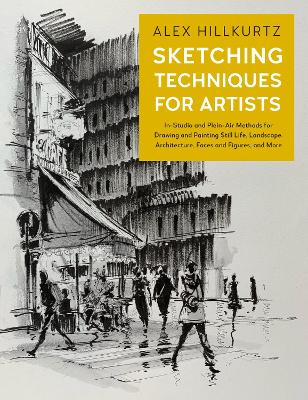Reviewed by annieb123 on
In-Studio and Plein-Air Methods for Drawing and Painting is a new technique volume written by Alex Hillkurtz. Due out 12th Jan 2021 from Quarto on their Rockport imprint, it's 144 pages and will be available in paperback format.
The author is a skilled and well known storyboard artist who uses cinematic visuals to convey story and context. There is a useful amount of philosophy and technique contained in the instructions here to help artists not only render what they *see* but to tell the story of what they're seeing at the same time. Guided directions help the student convey who, what, where, when, and why in their renderings.
The layout is straightforward and easy to understand. The introduction includes a survey of the tools, materials, and basic techniques. The following chapters progress through exercise lessons in composition and perspective to give the reader a basic understanding and facility with visual storytelling, contrast, thumbnails, and different perspective views (and which to choose for specific situations).
The rest of the book provides specialized tutorial lessons grouped roughly thematically: still life, landscape, architecture, figures, and a final chapter showing several watercolor techniques. The book wraps up with an afterword from the author, abbreviated resources and influences lists for further reading, and a short author biography.
The overall feel of the book is technically rich, useful, and varied and I saw many things which got my fingers itching to jump in and start drawing. I'm not a professional artist by any stretch of the imagination, but there were a number of takeaways here which I will certainly incorporate in my drawing practice going forward.
Five stars. This would make a superlative selection (possibly bundled with drawing supplies?) for gift giving, as well as as a good support text for more formal drawing instruction/learning. The perspective tutorials were especially apt and well written.
Disclosure: I received an ARC at no cost from the author/publisher for review purposes.
Reading updates
- Started reading
- 1 January, 2021: Finished reading
- 1 January, 2021: Reviewed
